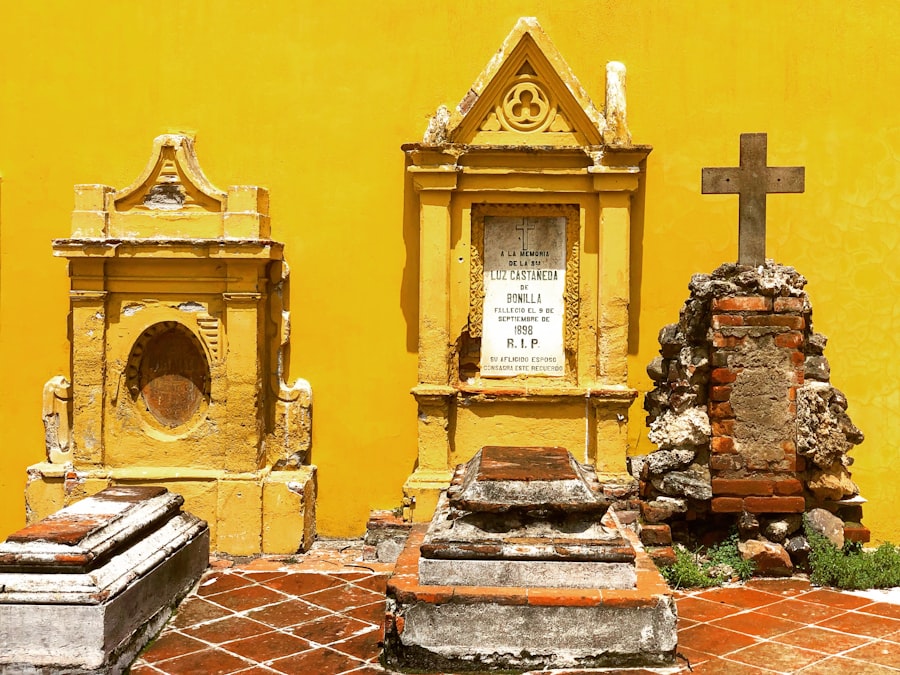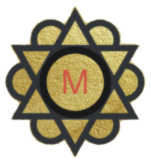
The intricate relationship between ancestry and tarot is a fascinating exploration of how our familial lineage can influence our present lives. Ancestry encompasses not only the biological connections we share with our forebears but also the cultural, spiritual, and emotional legacies they leave behind. Tarot, as a tool for divination and self-reflection, can serve as a bridge to these ancestral ties, allowing individuals to delve into the depths of their heritage.
Each card in the tarot deck can be seen as a representation of various archetypes and experiences that resonate with the collective human experience, including those of our ancestors. By understanding the role of ancestry in tarot, practitioners can unlock deeper insights into their personal narratives and the patterns that have been passed down through generations.
For instance, the Tower card, which signifies upheaval and sudden change, may resonate with familial stories of migration, loss, or transformation. Similarly, the Empress card embodies fertility and nurturing, echoing the roles of matriarchs who have shaped family dynamics over time. By recognizing these connections, tarot practitioners can engage in a dialogue with their lineage, gaining clarity on how ancestral experiences shape their current circumstances.
This understanding fosters a sense of continuity and belonging, as individuals realize they are part of a larger tapestry woven from the threads of their ancestors’ lives.
Key Takeaways
- Ancestry plays a significant role in tarot as it can provide insight into family history, traits, and patterns.
- Tarot can be used as a tool to connect with ancestral spirits and seek guidance from them.
- By using tarot, individuals can uncover family patterns and traits that have been passed down through generations.
- Tarot can be used to explore ancestral wisdom and traditions, providing a deeper understanding of cultural heritage.
- Tarot can also be used as a tool for healing ancestral wounds and addressing intergenerational trauma.
- Ancestral guidance can be incorporated into tarot readings to provide a deeper level of insight and understanding.
Connecting with Ancestral Spirits through Tarot
Connecting with ancestral spirits through tarot involves creating a sacred space where one can invite the wisdom and guidance of those who came before. This process often begins with intention-setting, where the practitioner articulates their desire to connect with specific ancestors or to seek general guidance from their lineage. The act of shuffling the tarot deck while focusing on these intentions can serve as a powerful ritual, allowing the energy of the ancestors to flow into the reading.
Many practitioners find that certain cards resonate more strongly during these sessions, revealing messages or insights that are particularly relevant to their ancestral connections. Incorporating elements such as candles, crystals, or ancestral photographs can enhance this connection. For example, lighting a candle while asking for guidance from a specific ancestor can create an atmosphere conducive to spiritual communication.
Additionally, using crystals like clear quartz or amethyst can amplify intuitive insights during the reading. As cards are drawn, practitioners may find themselves experiencing vivid memories or emotions tied to their ancestors, which can provide profound insights into their current life situations. This connection not only enriches the tarot reading but also fosters a sense of reverence for the wisdom that has been passed down through generations.
Using Tarot to Uncover Family Patterns and Traits

Tarot serves as an invaluable tool for uncovering family patterns and traits that may have been unconsciously inherited. Each card drawn can represent not only personal experiences but also familial dynamics that have shaped an individual’s identity. For instance, drawing the Ten of Cups may indicate a strong emphasis on family harmony and emotional fulfillment within one’s lineage, suggesting that this value has been instilled across generations.
Conversely, cards like the Five of Pentacles might reveal themes of struggle or scarcity that have persisted within a family line, prompting reflection on how these patterns manifest in one’s own life. By examining these patterns through the lens of tarot, individuals can gain clarity on how their family history influences their behaviors, choices, and relationships. This process often involves identifying recurring themes or challenges that have been passed down, such as issues related to communication, financial stability, or emotional resilience.
For example, if multiple generations have faced difficulties in expressing emotions openly, drawing cards related to communication—such as the Page of Swords—can highlight the need for change in this area. Recognizing these inherited traits empowers individuals to break free from limiting patterns and consciously choose new paths for themselves.
Exploring Ancestral Wisdom and Traditions with Tarot
Exploring ancestral wisdom and traditions through tarot invites individuals to tap into the rich reservoir of knowledge held by their forebears.
For instance, a practitioner with Indigenous roots may find that certain cards resonate with traditional stories or teachings from their culture.
The High Priestess card, often associated with intuition and hidden knowledge, may symbolize the deep spiritual practices passed down through generations. By engaging with these symbols during readings, individuals can honor their heritage while seeking guidance from ancestral wisdom. Incorporating traditional practices into tarot readings can further enhance this exploration.
For example, some practitioners may choose to include specific rituals or prayers that are significant to their ancestry before beginning a reading. This could involve invoking the names of ancestors or using traditional herbs for cleansing and protection. By doing so, individuals create a sacred space that honors both their personal journey and the collective wisdom of their lineage.
The insights gained from such readings can illuminate paths forward while fostering a deeper connection to one’s cultural roots.
Healing Ancestral Wounds with Tarot
Healing ancestral wounds is a profound aspect of using tarot as a tool for personal growth and transformation. Many individuals carry emotional burdens or traumas that have been passed down through generations, often without conscious awareness. Tarot can facilitate this healing process by bringing these issues to light and providing a framework for understanding and addressing them.
For instance, drawing cards like the Three of Swords may indicate heartbreak or betrayal within a family context, prompting reflection on how these experiences have shaped one’s emotional landscape. Through tarot readings focused on healing ancestral wounds, individuals can identify specific patterns or traumas that require attention. This might involve exploring themes of abandonment, loss, or unresolved conflict that have reverberated through family history.
By acknowledging these wounds and seeking guidance from the cards, practitioners can begin to release old patterns and cultivate new ways of being. The Strength card, for example, symbolizes inner resilience and courage; drawing this card during a healing session may inspire individuals to confront difficult emotions and embrace their power to heal not only themselves but also their lineage.
Incorporating Ancestral Guidance into Tarot Readings

Inviting Ancestral Wisdom
Incorporating ancestral guidance into tarot readings enriches the experience by weaving together personal insights with the wisdom of those who came before. This practice often begins with setting an intention to invite ancestral guidance into the reading process. Practitioners may choose to create an altar dedicated to their ancestors or simply hold space for them in their hearts as they shuffle the cards.
Uncovering Hidden Patterns and Insights
The act of drawing cards becomes a collaborative effort between the individual and their lineage, allowing for a deeper understanding of how ancestral influences shape current circumstances. As cards are drawn during a reading, practitioners can reflect on how each card relates to their ancestors’ experiences and teachings. For instance, if the Wheel of Fortune appears, it may prompt contemplation on cycles of change within the family history—how fortunes have risen and fallen over generations.
Empowerment through Ancestral Connection
This connection fosters a sense of continuity and belonging while providing valuable insights into personal challenges and opportunities. By acknowledging ancestral guidance in this way, individuals not only honor their heritage but also empower themselves to navigate life’s complexities with greater awareness and intention. In summary, the interplay between ancestry and tarot offers a rich tapestry for exploration and healing.
If you are interested in exploring the mystical world of numerology, you may want to check out the article Understanding Numerology and Its Significance. Numerology can provide valuable insights into your personality, strengths, and weaknesses based on the numbers associated with your name and birthdate. By combining the wisdom of tarot cards with the guidance of numerology, you can gain a deeper understanding of yourself and your ancestral connections. Additionally, you may also find The Power and Influence of Numerology Number 8 and Unleashing the Power of the Tarot Card Magician to be insightful resources for further exploration.
FAQs
What is Tarot?
Tarot is a form of divination that uses a deck of cards to gain insight into past, present, and future events. The deck typically consists of 78 cards, each with its own symbolism and meaning.
How can Tarot be used to explore ancestry?
Tarot can be used to explore ancestry by tapping into the collective wisdom and experiences of our ancestors. The cards can provide insight into family patterns, ancestral influences, and past events that may be impacting the present.
What are some Tarot spreads for exploring ancestry?
There are several Tarot spreads specifically designed for exploring ancestry, such as the Ancestral Lineage Spread, the Family Tree Spread, and the Ancestor Guidance Spread. These spreads can help uncover information about family history, ancestral strengths, and inherited traits.
Can Tarot provide information about specific ancestors?
While Tarot can provide insight into ancestral influences and patterns, it is not typically used to communicate with specific deceased individuals. Instead, it can offer a broader understanding of ancestral energies and experiences.
Is it necessary to have a deep understanding of Tarot to explore ancestry?
While a basic understanding of Tarot is helpful, it is not necessary to be an expert in Tarot to explore ancestry. Using Tarot for ancestral exploration can be a personal and intuitive process, and individuals can develop their own methods and interpretations.






